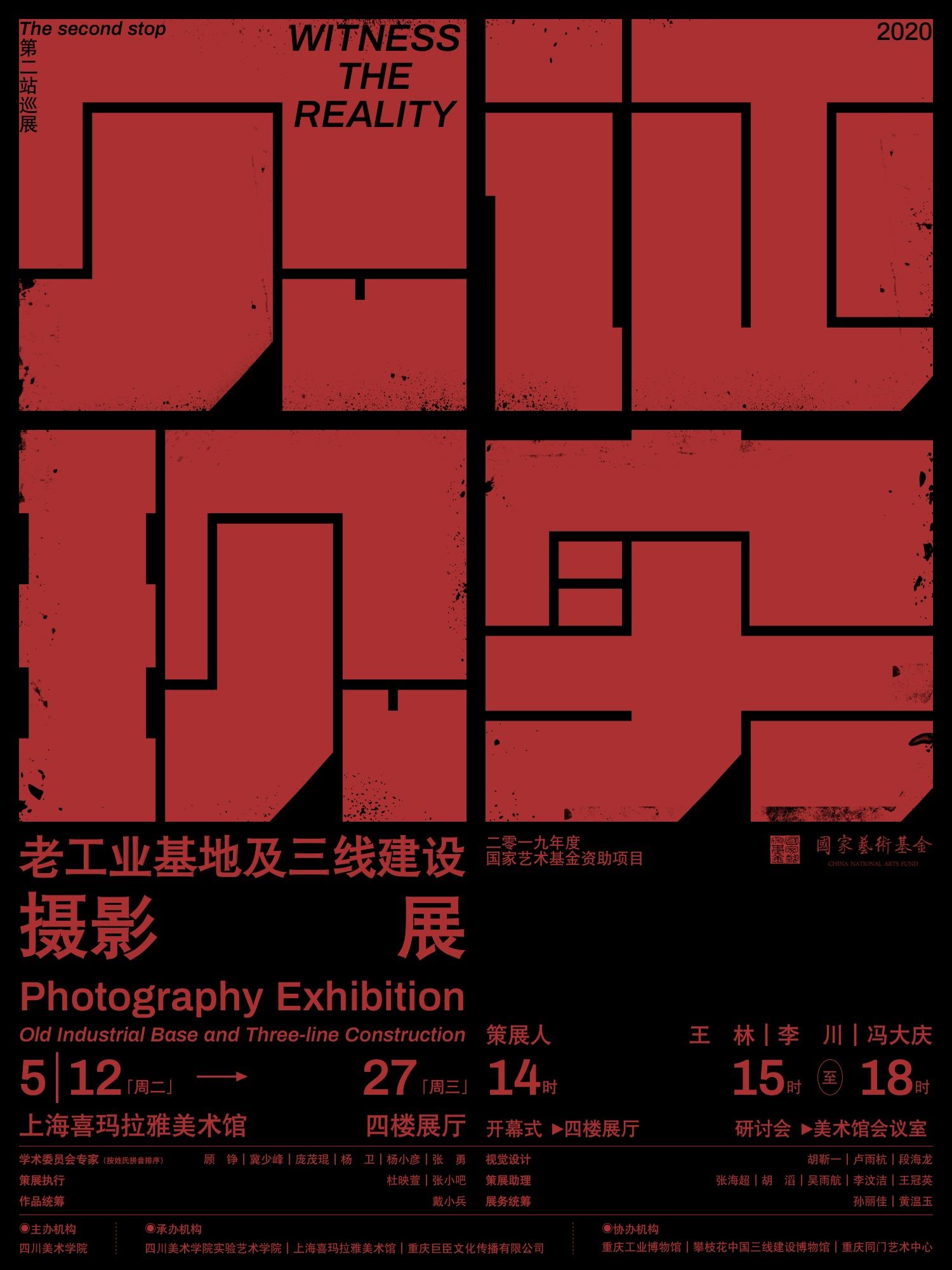分享到微信,
请点击右上角。
再选择[发送朋友]
或[分享到朋友圈]



2020年5月12日-5月27日,艺术家傅文俊的大型影像装置作品《后工业时代》在上海喜玛拉雅美术馆“见证现实——老工业基地及三线建设摄影展”上海站巡展中展出。作为2019国家艺术基金资助项目,首站展览于2019年12月在重庆美术馆举行。

《后工业时代》在重庆美术馆展览现场
区别于传统纪实性摄影展览,展览作品在工业、机械蕴含的现代审美感受中寻找着艺术本体语言的表达方式,探索不同媒介间的表现差异,将个人的审美价值和人文温度通过对镜头前的物象选择与重组得以显现。
傅文俊的影像装置作品《后工业时代》,创作于2015年。2015年在广东美术馆参加了首届亚洲当代艺术暨第五届广东三年展,2017年3月在中国美术馆个展“和而不同:傅文俊数绘摄影展”上展出。这次在重庆美术馆和上海喜玛拉雅美术馆的呈现,受场地限制,还有五分之二的部分并没有完全展出。

《后工业时代》在上海喜玛拉雅美术馆展览现场
对于作品的创作理念,艺术家谈到:
“作品起始于对达芬奇的《维特鲁威人》素描的思考,众所周知,维特鲁威人是艺术大师基于黄金分割点试图创作‘完美比例’的男性人体。而‘黄金分割’这一基本适用于所有艺术与建筑的数理结论是纯粹理性分析的产物,而理性的启蒙带来了工业革命。作品的呈现方式是镶嵌于破旧的机车车轮,之所以将作品镶嵌在圆形的轮胎上,一是模拟维特鲁威人方形与圆形的基底,试问工业进程是否也有其自身的黄金分割点?如果有,那么工业进程是否也应该进退有度?另外也因为轮胎自身就是时间与空间的记录器。我的作品就是对工业文明的反思,我将抽象化的工业生产厂房摄影图片根据画面的平面布局形式贴以电路板实物。使得作品呈现本身就是一个过程,一个工业化到数字化的转换,一个小小的数字芯片,可以囊括多少信息量,其中自然蕴含真伪、也蕴含优劣,就像工业化进程一样,伟大中也伴随着毁灭。另外车轮背面装有LED投影器,车轮背后投影出手工业时代,工业时代和后工业时代之间变化的动态影像。充分表现出自身独特的城市工业化发展进程,以及与西方工业文明起点之间的时间与空间的融合衔接。”


《后工业时代》细节
From May 12th to May 27th 2020, Fu Wenjun’s large-scale photo-video installation “Post-Industrial Era” is on view at Shanghai Himalayas Museum at the group exhibition “Witness to Reality -Photography Exhibition of Old Industrial Base and Three-Line Construction”. Shanghai Himalayas Museum is the second stop of the project that is financed by China National Arts Fund and first showed at Chongqing Art Museum in December 2019.
The exhibition is divided into two sections:"Old Industrial Base" and "Three-line Construction". The works displaying at the first section manifest the changes of Chinese old industrial bases from the past to the present. The images invite the audience to touch the truth deeply buried in the historical memory, with diverse and personal photographic language using by different artists.
There are a large number of works in the"three-line construction" section. Artists use cameras to interpretand reflect on industrialization, and meet the challenges of images in the iterative evolution of technology.
In this section, you will find Fu Wenjun’s work “Post-Industrial Era”, a large-scale photo-video installation, which presents artist’s reflection on the questions related to the industrialization and digitalization from the past, to the present and the future.
The work was created in 2015. Then it was exhibited at Guangdong Museum of Art “1st Asia Biennial and 5th GuangzhouTriennial” and at National Art Museum of China solo show “Harmony in Diversity: Fu Wenjun’s Digital Pictorial Photography” in 2017.
Here is the artist statement about the work:
“The project begins with my thinking on the famous sketch Uomo vitruviano of Leonardo Da Vinci. It is known that with Uomo Vitruviano, the Master tried to create a 'perfectly proportioned' male body on the base of the golden ratio.
The golden ration that can apply to nearly all art forms and architecture represents the product of pure rational analysis. It is the enlightenment on rationality that brings the Industrial Revolution. The conceptual photography works are presented by mounting on the worn-out locomotive wheels. Why the works are mounted on the round wheels? Firstly, by imitating the square and round background of Uomo Vitruviano, I query if the industrialization process also has its own golden ratio. If has, should the industrialization process respect the scales/principals? Secondly, I think the wheels are the recorder of time and space. This art project is my reflections on the industrial civilization. According to the image plane layout, I stick the real circuit boards on the abstraction factory photos. Presenting the art project becomes a process, a transformation from industrialization to digitalization; a very small chip can contain a great quantity of information, which can be true or false, good or bad, just like the industrialization process: ugliness along with greatness. Besides, the back of the wheels are equipped with LED projectors, projecting the moving images of the changes from handicraft age, industrial age to the post-industrial age, which reflect Asia's unique civilization and industrialization process, and the temporal and spatial links between Asia and the starting point of Western industrial civilization.”

分享到微信,
请点击右上角。
再选择[发送朋友]
或[分享到朋友圈]

